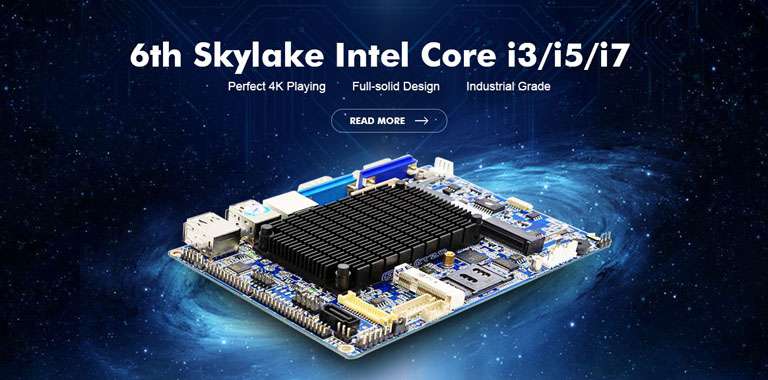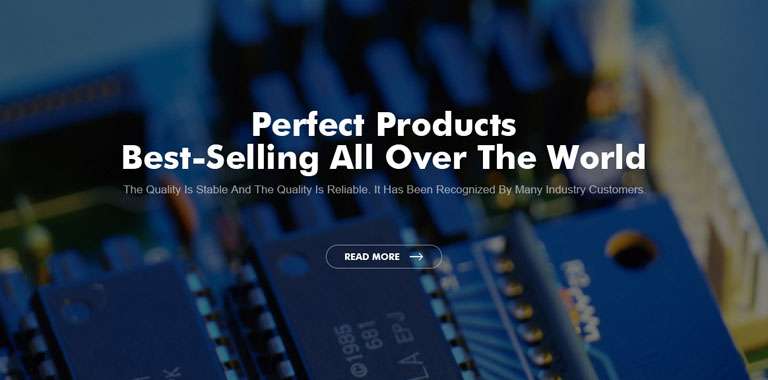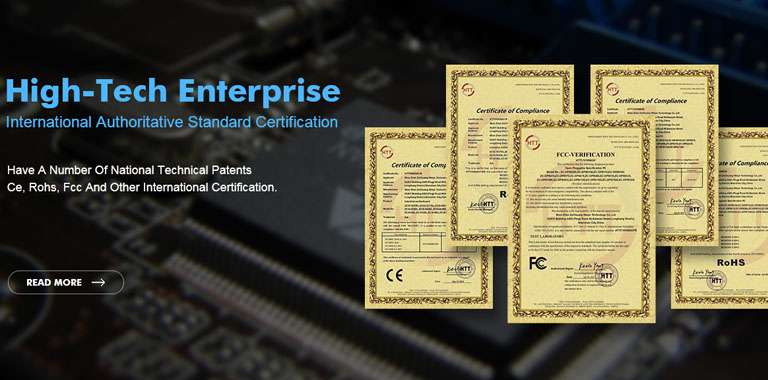Motherboard for Industrial Computing: The Backbone of Modern Automation and IoT Ecosystems
2025-05-09
Motherboard for Industrial Computing: The Backbone of Modern Automation and IoT Ecosystems
In the rapidly evolving landscape of Industry 4.0, smart cities, and decentralized IoT networks, industrial computing motherboards have emerged as the unsung heroes powering mission-critical operations. Unlike consumer-grade hardware, these specialized boards are engineered to withstand extreme environments, deliver deterministic performance, and adapt to decades-long operational lifecycles. This article explores the defining features, application paradigms, and future trajectories of industrial motherboards, positioning them as the cornerstone of next-generation automation.
I. Core Design Principles for Industrial-Grade Motherboards
Industrial computing demands hardware that transcends conventional desktop specifications. Key design philosophies include:
1. Ruggedization and Environmental Resilience
· Extended Temperature Ranges: Operate reliably from -40°C to 85°C, critical for Arctic oil rigs or desert solar farms.
· Vibration/Shock Resistance: MIL-STD-810G compliance ensures stability in railway signaling or mining equipment (tested up to 5Grms random vibration).
· Contaminant Protection: IP67-rated enclosures guard against dust, humidity, and chemical exposure in food processing plants.
2. Deterministic Performance and Real-Time Capabilities
· Time-Sensitive Networking (TSN): Hardware-level support for IEEE 802.1Qbv enables microsecond-synchronized control in robotic assembly lines.
· Dual LAN with Layer 2 Redundancy: Parallel Ethernet ports implement PRP/HSR protocols for zero-packet-loss communication in power grid SCADA systems.
3. Longevity and Legacy Compatibility
· 15+ Year Component Lifecycles: Avoids obsolescence in infrastructure projects like traffic light control or water treatment plants.
· Backward-Compatible Interfaces: Retention of legacy ports (RS-232/485, GPIO) while integrating PCIe 5.0 and USB4 for future-proofing.
II. Architectural Innovations Driving Industrial Adoption
Modern industrial motherboards leverage cutting-edge technologies to balance power, efficiency, and adaptability:
A. Heterogeneous Computing Architectures
· Hybrid CPU Cores: Combining high-performance and efficiency cores allows simultaneous execution of real-time control algorithms (e.g., PID loops) and background data logging.
· Integrated AI Accelerators: Onboard NPUs enable edge inference for predictive maintenance, reducing cloud dependency in remote oil pipelines.
B. Modular Expansion Capabilities
· PCIe/CAMM Slots: Support GPU/FPGA co-processors for vision-guided robotics or 5G mMIMO baseband processing.
· M.2 E-key and B-key Sockets: Facilitate plug-and-play upgrades for Wi-Fi 7 or industrial IoT protocols like LoRaWAN.
C. Power Integrity and Energy Efficiency
· Wide Voltage Input (9–36V DC): Compatible with automotive electrical systems and renewable energy sources.
· Dynamic Power Scaling: Reduces TDP by 40% during idle phases in warehouse AGV (Automated Guided Vehicle) fleets.
III. Sector-Specific Applications Redefining Industries
1. Smart Manufacturing and Industry 4.0
· Digital Twin Synchronization: Motherboards orchestrate real-time data exchange between physical CNC machines and their virtual counterparts, enabling adaptive machining strategies.
· Machine Vision Quality Control: PCIe-connected 12K cameras inspect 500+ automotive weld points per minute, leveraging OpenCL-optimized image processing.
2. Transportation and Urban Mobility
· Autonomous Fleet Management: Redundant CAN FD interfaces process LiDAR/radar feeds for autonomous port logistics vehicles, achieving <100μs decision latency.
· Smart Traffic Light Optimization: Edge-based ML models adjust signal timing using real-time pedestrian/vehicle density data, reducing congestion by 25%.
3. Energy and Critical Infrastructure
· Microgrid Controllers: Parallel processing of 1,000+ smart meter data streams enables dynamic load balancing during peak demand.
· Nuclear Plant Safety Systems: SIL-3 certified designs with triple modular redundancy (TMR) meet IEC 61508 standards for fault-tolerant neutron flux monitoring.
4. Healthcare and Biotechnology
· Portable MRI Systems: GPU-accelerated reconstruction algorithms deliver diagnostic-grade images in field hospitals.
· Genomic Sequencing Nodes: NVMe RAID arrays process 200 GB/hour of DNA data for pandemic response teams.
IV. Emerging Trends Shaping the Next Decade
1. AI-Native Motherboard Architectures
· In-Package Optical I/O: Mitigates copper trace limitations for distributed AI training across factory floors.
· Chiplet-Based Designs: Customizable compute/storage/IQ blocks allow OEMs to tailor boards for niche applications like semiconductor lithography control.
2. Cybersecurity-by-Design Paradigms
· Post-Quantum Cryptography Engines: Pre-empt threats from quantum computing with lattice-based encryption for grid control systems.
· Hardware Root of Trust (RoT): Immutable identity modules prevent firmware tampering in railway signaling boards.
3. Sustainable Industrial Computing
· Gallium Nitride (GaN) Power Systems: Cut energy losses by 30% in high-current motor control applications.
· Circular Economy Compliance: Modular repair-friendly designs align with EU’s upcoming Right-to-Repair legislation for industrial hardware.
V. Strategic Considerations for System Integrators
To maximize ROI, engineers should prioritize:
· Interoperability Testing: Validate compatibility with OPC UA, MQTT, and legacy Modbus RTU ecosystems.
· Predictive Maintenance Integration: Embed vibration/thermal sensors for self-diagnosing motherboard health.
· Certification Roadmaps: Pre-certify designs for ATEX (explosive environments) and IEC 60601-1 (medical devices) to accelerate deployment.
Industrial computing motherboards are no longer passive components but active enablers of digital transformation. By harmonizing rugged reliability with AI-driven adaptability, these platforms empower industries to navigate the complexities of autonomy, sustainability, and cybersecurity. As we approach 2030, the convergence of chiplet modularity, optical interconnectivity, and quantum-safe security will redefine what industrial motherboards can achieve—ushering in an era where every factory, grid, and city operates as a self-optimizing ecosystem.
PREV: Motherboards for KIOSK Systems: Design, Functionality, and I...
NEXT: The Ultimate Guide to Compact Power: Why Pairing a Mini ITX ...



